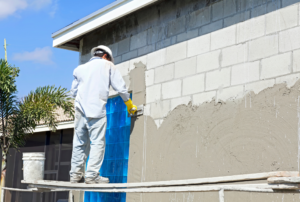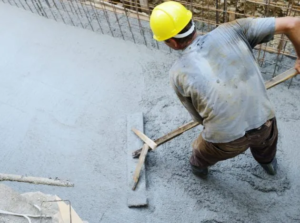Hair Salon San Francisco is a place where clients can have their hair, nails and other body treatments done. It is typically staffed by licensed barbers and cosmetologists.

Most traditional salons are full-service, and they usually have a reception area with multiple workstations behind it. Some offer a variety of services, and others focus on specific hair services or beauty treatments.
It’s not a secret that your hair is one of the most important elements of your overall appearance. A great haircut, color, or style can instantly transform your appearance and give you the confidence boost you’ve been looking for. Therefore, it’s vital to find the perfect salon for your needs and style preferences. There are many factors to consider, such as location, price, and expertise. Here are some tips to help you make the right choice for your next salon appointment.
The first step in finding the right salon for you is to research local stylists. You can do this by searching online for salons in your area or by asking friends and family for recommendations. Once you have a list of potential salons, visit them to see if they meet your expectations. You want to find a salon that is clean and has an inviting atmosphere. Also, be sure to read reviews and look at pictures of previous clients’ work.
Whether you’re considering a new cut or color, it’s essential to communicate with your stylist before your appointment to ensure that they understand your vision. You can do this by explaining the look you’re going for, asking any questions you have, and providing visual examples. It’s also a good idea to bring reference photos of styles or colors that you like, as this will help your stylist achieve the look you’re envisioning.
Another consideration when choosing a salon is its commitment to sustainability and eco-friendly practices. For example, many locally-owned salons focus on using natural products and practicing green initiatives. This is a great way to support local businesses and reduce your carbon footprint!
When visiting a salon, you should always be polite and professional. Respect your stylist’s opinion and expertise, as they have years of experience in their field. Also, be sure to arrive at your appointment with your hair freshly washed and dry, as this will allow your stylist to perform the service efficiently and effectively.
Preparing for Your Visit
Before your appointment, make sure you know what you want to achieve. It’s important to communicate your goals clearly to your stylist so they can get an idea of the scope of work involved, especially for color services. If you have any questions, don’t hesitate to ask! Having clear communication with your stylist is essential to a happy and successful salon experience.
Make an appointment for the day before or in the morning if possible. This will give you plenty of time to wash your hair and avoid tangled locks. Arriving with clean hair will also help ensure your color turns out as expected. Also, it’s best to avoid putting any heavy products in your hair, such as gels or oils, for the duration of your service to prevent buildup that can smear or dull your color.
It’s a good idea to bring reference photos of cuts or styles you like so your stylist can replicate them on you. This will save you time and effort, as well as prevent confusion or miscommunication. Be sure to use pictures with the same skin tone and natural base color as your own so your stylist can understand what you’re trying to accomplish.
You should bring a list of your current medications, especially any that could interact with certain hair treatments, as well as your insurance card and driver’s license. Some salons may also require you to sign a waiver that says you are aware of the risks of the treatment, and agree to have your hair washed and rinsed before leaving the salon in case of any accidental spills or drips.
Salons are run by a variety of professionals, including stylists, barbers, estheticians and hair colorists. Franchise salons typically pay a fee to the parent company to use their brand names and must meet quality standards.
An experienced stylist can offer a wide range of haircuts, styling options and coloring techniques. They can also advise clients on home care and styling so their results last longer between appointments. They can even recommend a hair care product to fit your specific needs.
Making an Appointment
Before you book your appointment with a new stylist, it’s important to do some research. Ask friends, family and colleagues for recommendations, then look up their social media pages to see photos of their work. Some salons will also have a service menu that you can browse to get an idea of what they offer. Once you’ve narrowed down your choices, book a consultation appointment with each of them. These appointments are usually free and will allow you to get a feel for the stylist’s personality, work style, and technique.
When you book your appointment, be sure to include as many details about the look that you want as possible. For example, requesting a “cut and color” leaves the door open for interpretation, while asking for a “full crown balayage with highlights and low lights,” gives your stylist a clear vision of what you’re looking for.
During the consultation, take the opportunity to ask questions. Ask your stylist about their experience, training, and what services they recommend for your unique hair type and goals. Be honest about your budget, too, so your stylist can give you an accurate estimate of the cost and time involved in achieving your desired look.
Once you’ve booked your appointment, be sure to schedule it on a day that you can spend the whole time in the salon. Don’t try to cram it in between other obligations or risk leaving early, as this will be stressful for both of you.
When making your appointment, it’s also a good idea to ask about their cancellation policy. Some stylists will charge a fee for last-minute cancellations, while others will simply ask you to book another day.
When you arrive at the salon, be sure to bring a photo of your current hairstyle to help your stylist understand what you’re hoping to achieve. Then, be sure to follow their instructions for prepping your hair before receiving the service. Be sure to use a heat protection product and to follow their advice for healthy styling practices. Finally, don’t forget to ask how often you should return for maintenance. This will help you plan your schedule and keep your hair looking its best.
Communicating Effectively with Your Stylist
When you get your haircut, it’s important that the stylist understand exactly what you want. That way, they can give you the best possible result and you will leave the salon satisfied. Communication is key in just about any profession, but it’s especially vital in hairstyling. Stylists work closely with clients, giving them a look they love, so it’s important that they can clearly communicate their ideas.
To help ensure that your stylist gets the picture, bring pictures of styles you like to show them. This will help them to see the finished product in your head and get on the same page with you. You should also be willing to discuss the elements that make each style you like, including color, length, and texture. Having these discussions early on will prevent miscommunication.
A positive demeanor and a warm welcome are essential when communicating with clients. Greet them by name and make eye contact to set a friendly tone that will encourage their engagement. Asking about their day, hobbies and interests can help you uncover new topics of conversation and get to know your clients better. Avoid topics that are sensitive, such as religion, sexuality and politics, to avoid drama and the risk of causing offense.
Some clients prefer to remain silent during their services, but this doesn’t mean they don’t want to talk. Just be sure to read their non-verbal cues, such as looking down at their phone or glancing over at the door of the salon. They may just need a break from the conversation, so don’t take it personally.
Ask your client if they have any questions or concerns about their look. Listen to their answers and address any issues they have. For example, if they tell you their scalp is sensitive, politely ask them to move slowly or gently. It’s also helpful to let your client know that you are taking note of their feedback throughout the service. Many salons provide their clients with the option to sign in with a tablet or mobile device that will allow you to document your conversations and notes for later.


